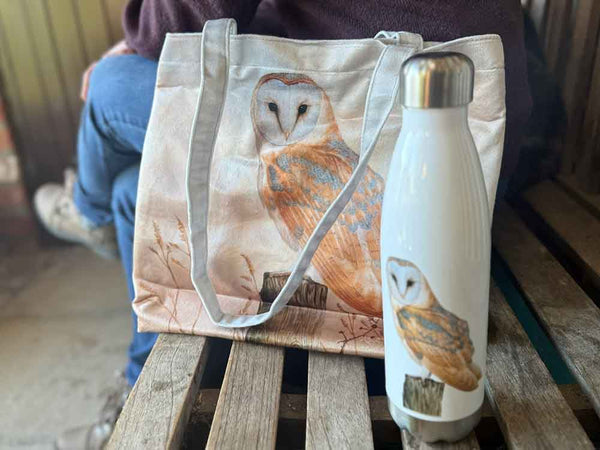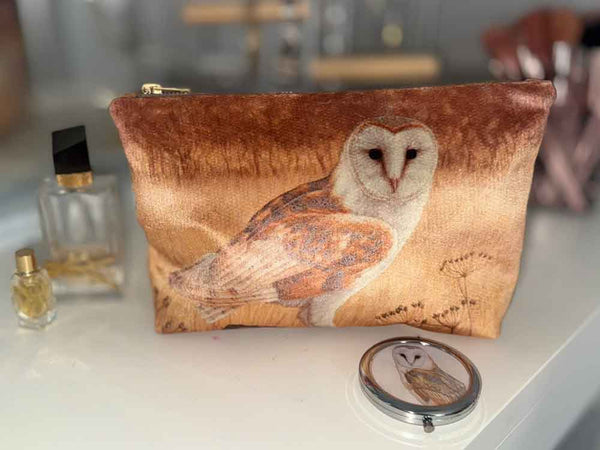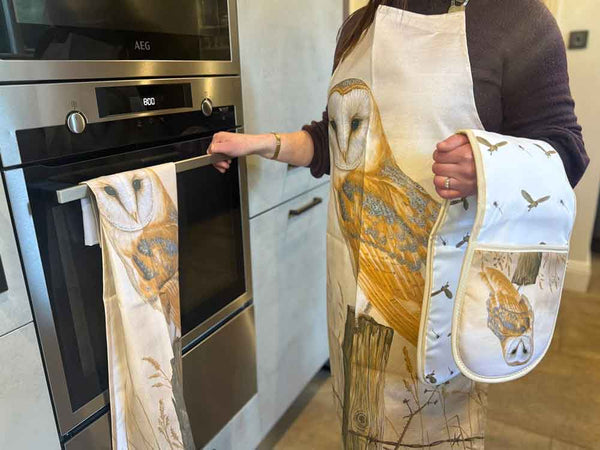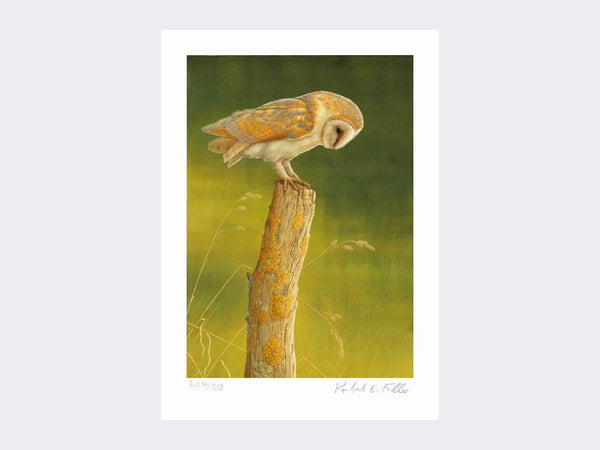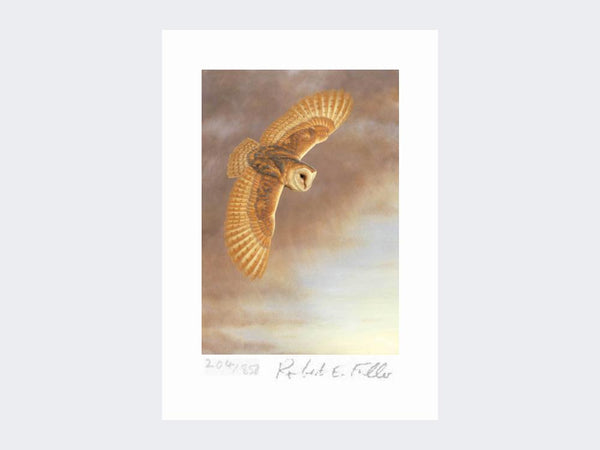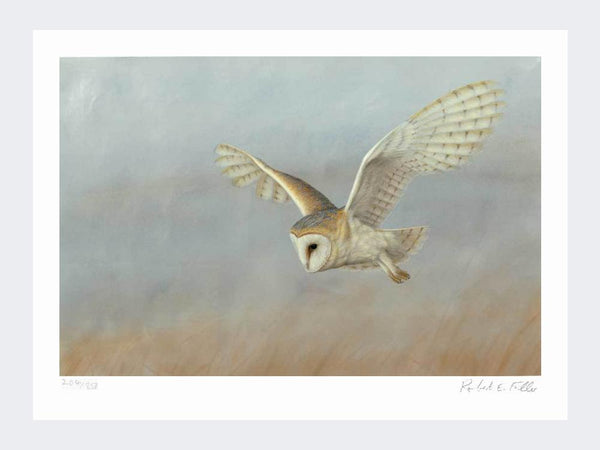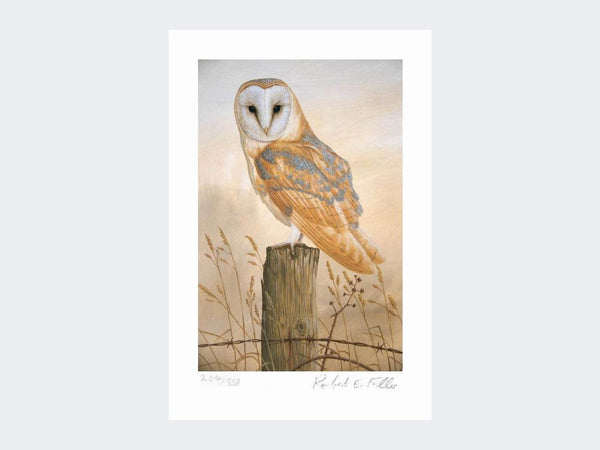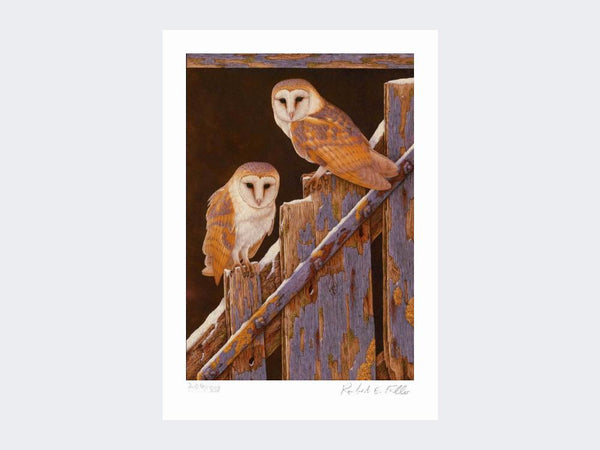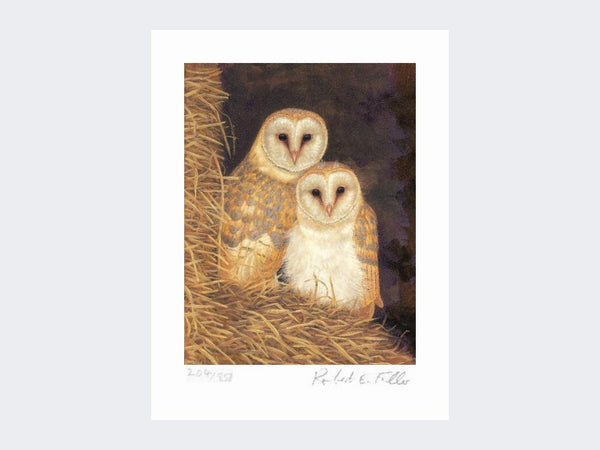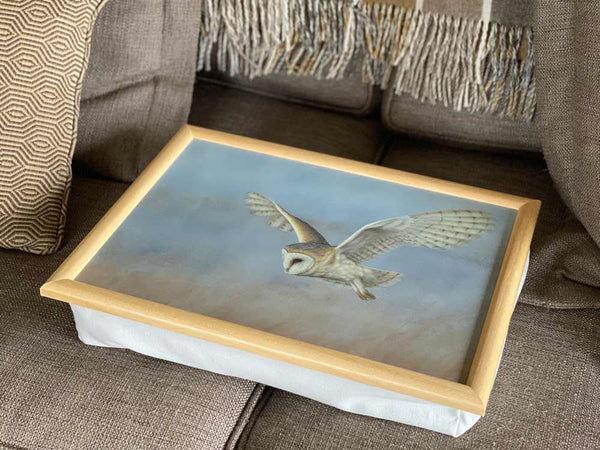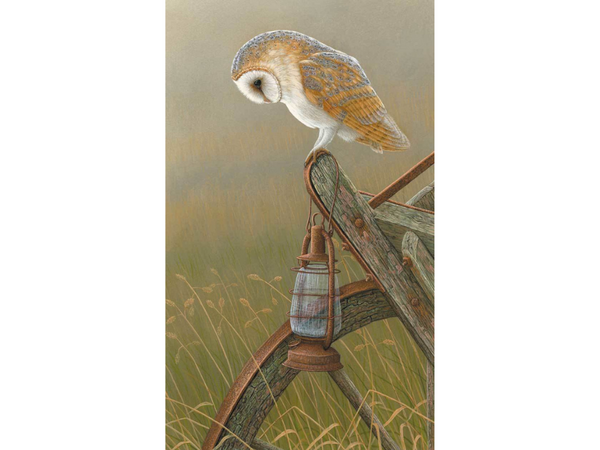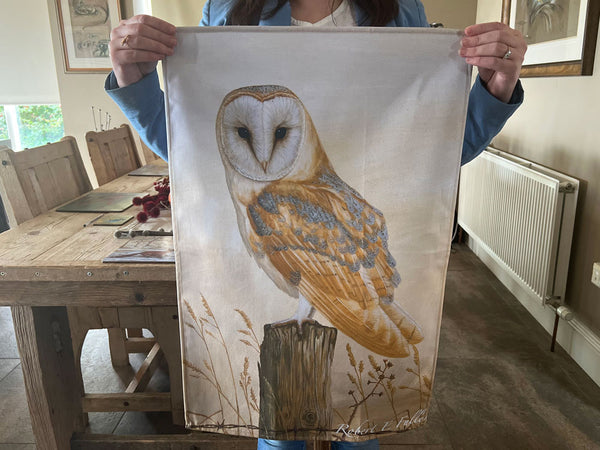As I paint, I can see pair of courting barn owls on a TV monitor next to my easel. The owls are standing side by side, the feathers of their folded wings gently touching. Their secret love story is being relayed from video cameras hidden in a nest box located high in a sycamore tree 200 metres from my art studio.


The pairing of these two owls marks a happy end to what has been a tumultuous year. The female is Gylfie, a resident of Fotherdale who was named by fans after her story was livestreamed onto YouTube this summer, and the male is her new, mystery partner. Their relationship is very recent, but it is important because Gylfie’s long-term partner disappeared quite suddenly last month and, without a mate, I had feared for her future here.
After the loss of long-term owl partner, Barney
Gylfie has lived here at Fotherdale for at least two years. But her previous mate, Barney was an even longer resident. A reliable hunter, he was a good parent and had raised chicks here for at least three seasons. But barn owls have an average life expectancy of just four years in the wild, and I fear the worst may now have befallen him. Barney’s disappearance came just as this year’s brood were reaching independence after what has been a difficult breeding year.
It's been a difficult breeding year
Although he and Gylfie managed to raise three owlets this year, only one chick hatched from their first clutch and only two survived from the second brood. Named Hans and Grete by fans of the nest box on YouTube, they grew fast and by early October were beginning to take their first flights. Click here to read the story of their first, only chick, Solo, and click here to follow the story from their nest box this year.
The arrival of a late foster chick
It was at this point that I received a call from Ryedale Rehabilitation, a wildlife rescue centre in Malton. A young owlet had been found on the ground next to its dead sibling on a farm near Castle Howard. It was about eight weeks old, nearly the same age as the two owlets here at Fotherdale. Late broods like this are often unsuccessful. As winter approaches and the weather worsens the adults struggle to find sufficient food to support their large hungry broods and the owlets can perish.
Howard is a brave young male owl
Luckily, there was just enough time before winter set in to rescue this one. I named him Howard after his home turf and kept him inside for the first few days to ensure he was well fed and in good health. My plan was to place him in the nest box with my resident owlets as soon as he was strong enough. Here I hoped Gylfie and Howard would adopt him as one of their own.
 The latest recruit to my owl fostering programme
The latest recruit to my owl fostering programme
It is a rehabilitation method I have used successfully for many years now. The theory is that owls operate purely on instinct and are programmed to feed a chick if they hear it calling. In turn, the chick gets a chance to fledge naturally and be supported in the weeks that follow by adults that have mistaken it for their own. The older the chick is, however, the more difficult this can be. At eight weeks old, the chances of Howard being successfully fostered was on the cusp of what was possible, but it was worth a try.
But Howard is rejected
However, things got off to a rocky start after Hans, the eldest of my resident owlets took objection to the introduction of a new owlet in the nest box. Hans was 10 days older than Howard and clearly considered this new foster chick a threat. When I spotted Hans on the monitor rushing at Howard, talons outstretched, I decided to intervene. I removed Howard and placed him alone into a different nest box. This new box, which I have named the Barn Owl Tower, was located well away from the box where Hans and Grete lived.
Within two days Barney began to feed Howard just as I had hoped. Gylfie, interestingly, did not get involved in his care, but then at this stage she was also no longer helping to feed her own owlets. Then two days and two long nights of bad weather swept through the valley and I didn’t see Howard during this time. I became very worried and just hoped that Barney would continue to feed Howard, wherever he was.
Thankfully Howard makes it through
The following morning, I spotted Howard in a hedge opposite my art gallery. He looked a little bedraggled but as I walked towards him he took flight in the direction of the barn owl tower. This was great news because it meant that Howard saw the Barn Owl Tower as home. After Barney’s disappearance, it meant that I could leave food for Howard here and know that he would survive any further dangers. Howard is still learning to navigate the wider world but his survival so far is a happy testament to the success of my owl fostering programme.
Identifying Gylfie's New Mate
As for Gylfie, the fact that she has found a new mate means I can look forward to a new breeding year here. But the best news of all is that it turns out her new mystery partner is also product of my Fotherdale fostering programme. After spotting that this male wore an identification ring on his left leg, I zoomed in on my video monitors until I was able to decipher the number and discovered that this was an owlet I had fostered here last year.
Proof that my owl fostering programme is a success
This owlet had been just four weeks old when he had been found on the ground after farmers near Scarborough had been emptying a barn of straw bales. After receiving intensive care from Ryedale Rehabilitation, I had released him here at Fotherdale at seven weeks old. Now here was proof he had survived the winter and reached maturity. Reintroducing rescued owls back into the wild is by no means an easy feat and is certainly an emotional rollercoaster since things don’t always work out as planned. And so discovering the identity of this new male is the best Christmas present I could hope for this year. Below is a short film of Gylfie's story:















